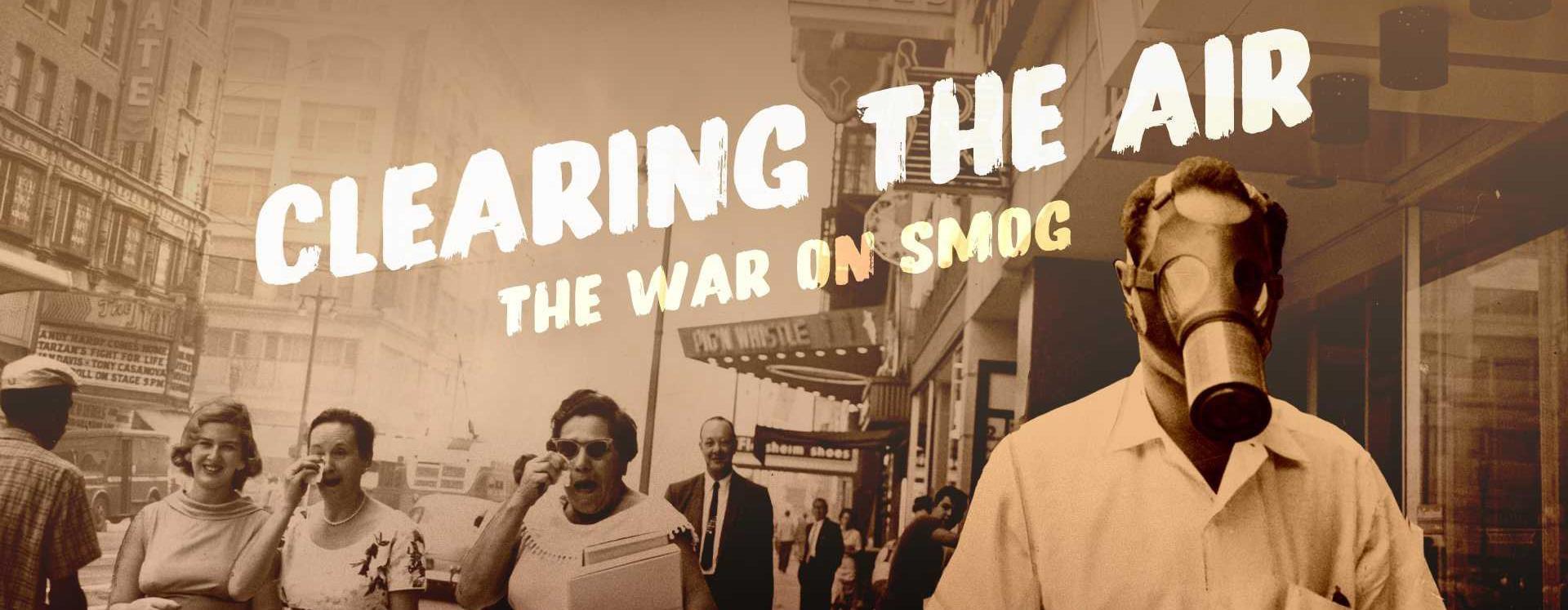In 1943, dark, smoky clouds enveloped Los Angeles, causing residents to complain of burning eyes, nausea, and difficulty breathing. The source of the smog was a mystery. American Experience explores the epic struggle for clean air, involving years of scientific study and civic pressure that would lead to the creation of the Environmental Protection Agency (EPA) and the Clean Air Act.
One of the subjects of the film is St. Louis Mayor Raymond Tucker (1953–1965), who was brought in by the City of Los Angeles to help with smoke pollution. He recommended they create an Air Pollution Control District, which they did in 1947. Tucker was considered a smoke control pioneer because he transformed St. Louis from the "smoke capital" of the U.S. into a clean-air leader and then used his expertise to help other cities—like Los Angeles—establish the first modern air pollution control districts. He bridged science, policy, and practical action at a time when most people still accepted polluted skies as “normal.”
His background in teaching mechanical engineering at Washington University led him to become executive secretary of the St. Louis Smoke Commission, created in the 1930s to tackle the city’s severe smoke problem. St. Louis was infamous for thick, black smoke from burning soft, high-sulfur coal.
Tucker introduced scientific methods for measuring smoke and fuel efficiency, bringing data-driven analysis to pollution control. Instead of relying on punishment alone, he worked with homeowners, industries, and railroads to encourage practical solutions—like switching to cleaner coal, natural gas, or better burning equipment.
By the early 1940s, St. Louis became the first major U.S. city to successfully reduce widespread smoke pollution. What had once been considered an unavoidable consequence of urban life was shown to be manageable through coordinated policy, technology, and cooperation. St. Louis’s program became a national model. Because of his success, Tucker was invited to Los Angeles in 1946 to study smog, where his recommendations led to the creation of the first Air Pollution Control District in the country.
The American Experience story starts in July 1943, when dark, smoky clouds suddenly descended over Los Angeles, causing residents to complain of burning eyes, nausea, and difficulty breathing. People couldn’t see across the street, and visibility was so bad that cars crashed. With World War II raging, many feared a chemical attack by the Japanese, but it soon became evident that no foreign enemy was to blame.
The waves of pollution called “smog” (a combination of “smoke” and “fog) continued, and the cause remained a mystery. Enter Arie Haagen-Smit, a plant chemist at Caltech, who deduced that evaporated hydrocarbons in gasoline, activated by the city’s abundant sunlight, reacted with other chemicals in the air to create ozone. Having finally solved the mystery, he called his discovery “photochemical smog.”
It was the beginning of an epic struggle for clean air, involving years of scientific investigation and civic pressure, bringing together people across ideological divides in a remarkable example of bipartisanship. Their work would lead to the creation of the EPA and the Clean Air Act, which have had an enduring effect on the quality of air we breathe.
Today, Angelenos still live with occasional smog, but it is vastly reduced, and car pollution is less than 1% of what it was when the fight to clean the air began. The fight with the petroleum and auto industries for emission standards on vehicles took decades, but Los Angeles’s war on smog changed the world.
Stream on the PBS app or online below.
Contributed by Lynanne Feilen, Communications Manager




